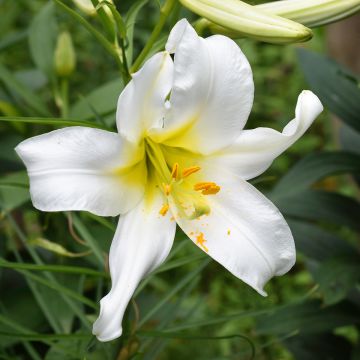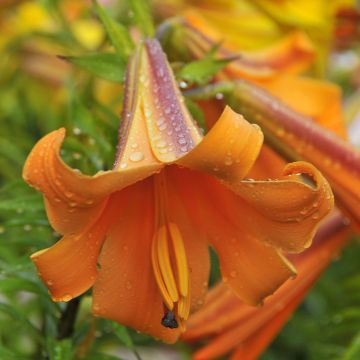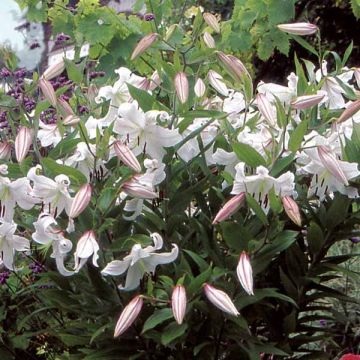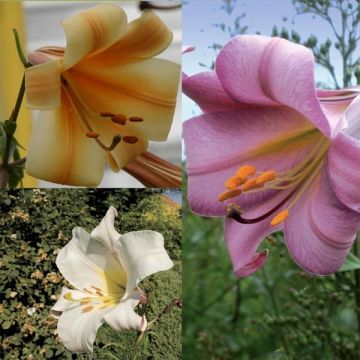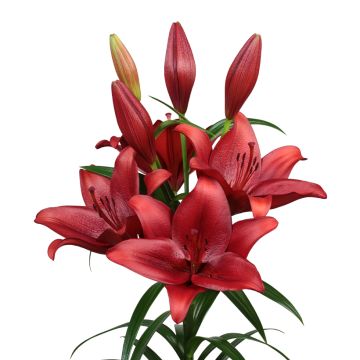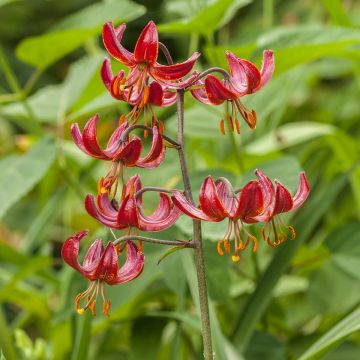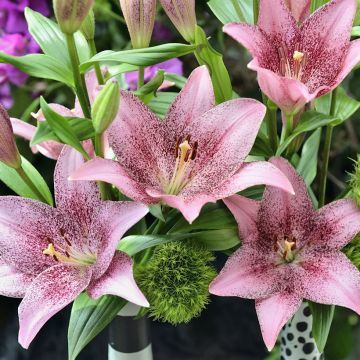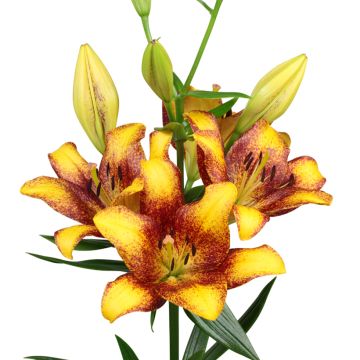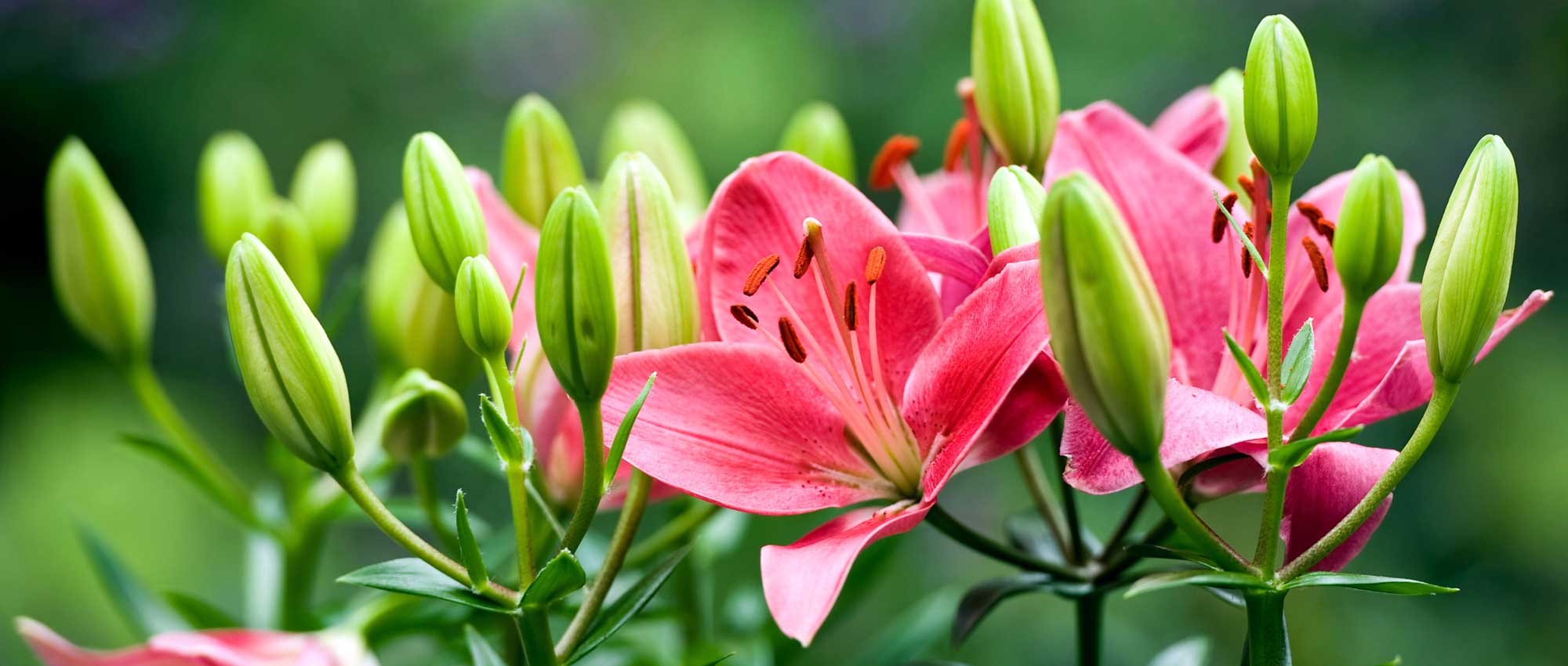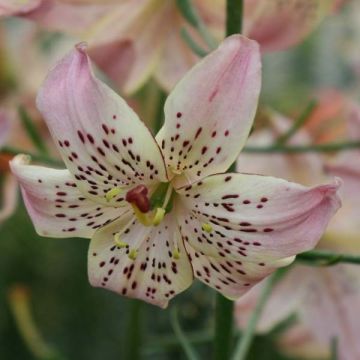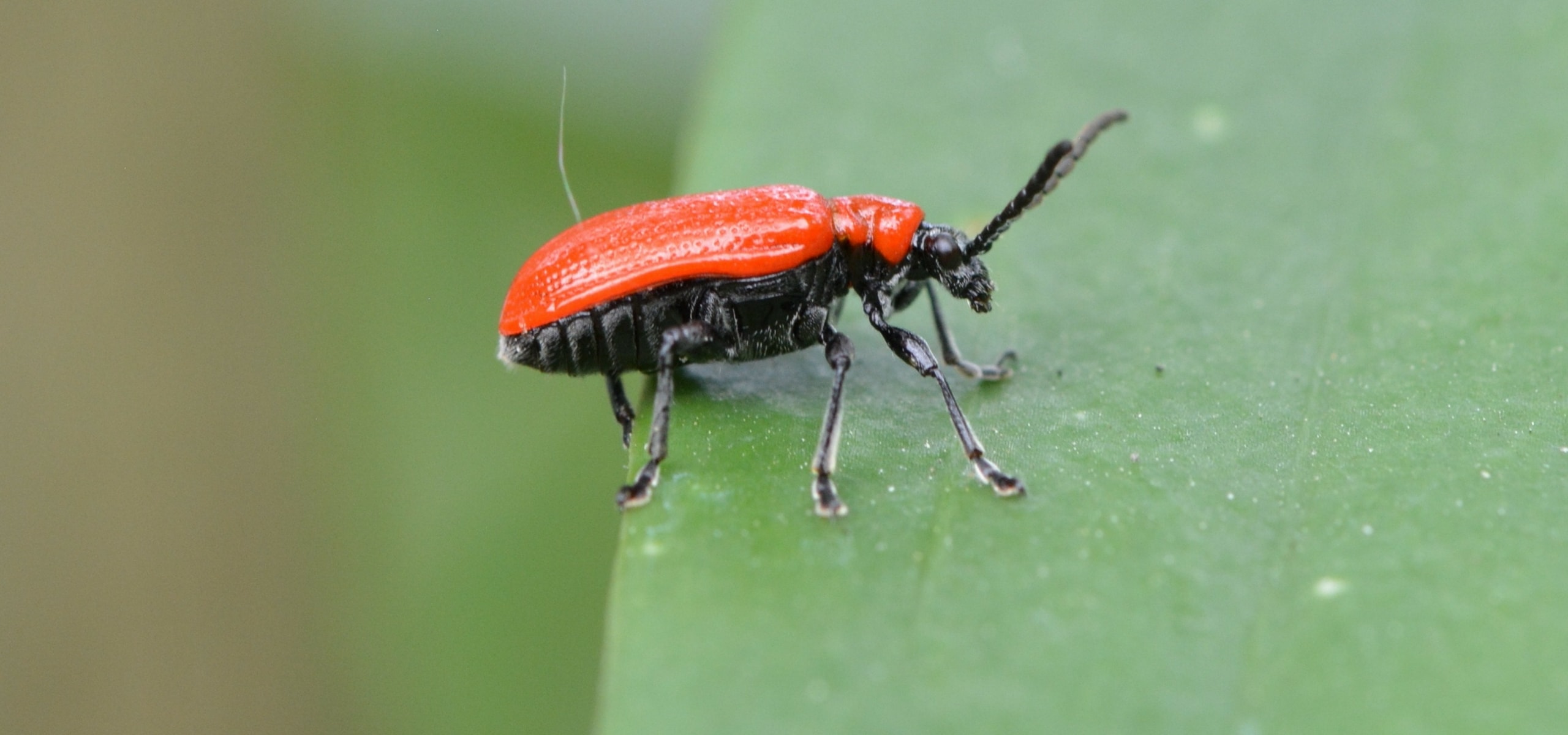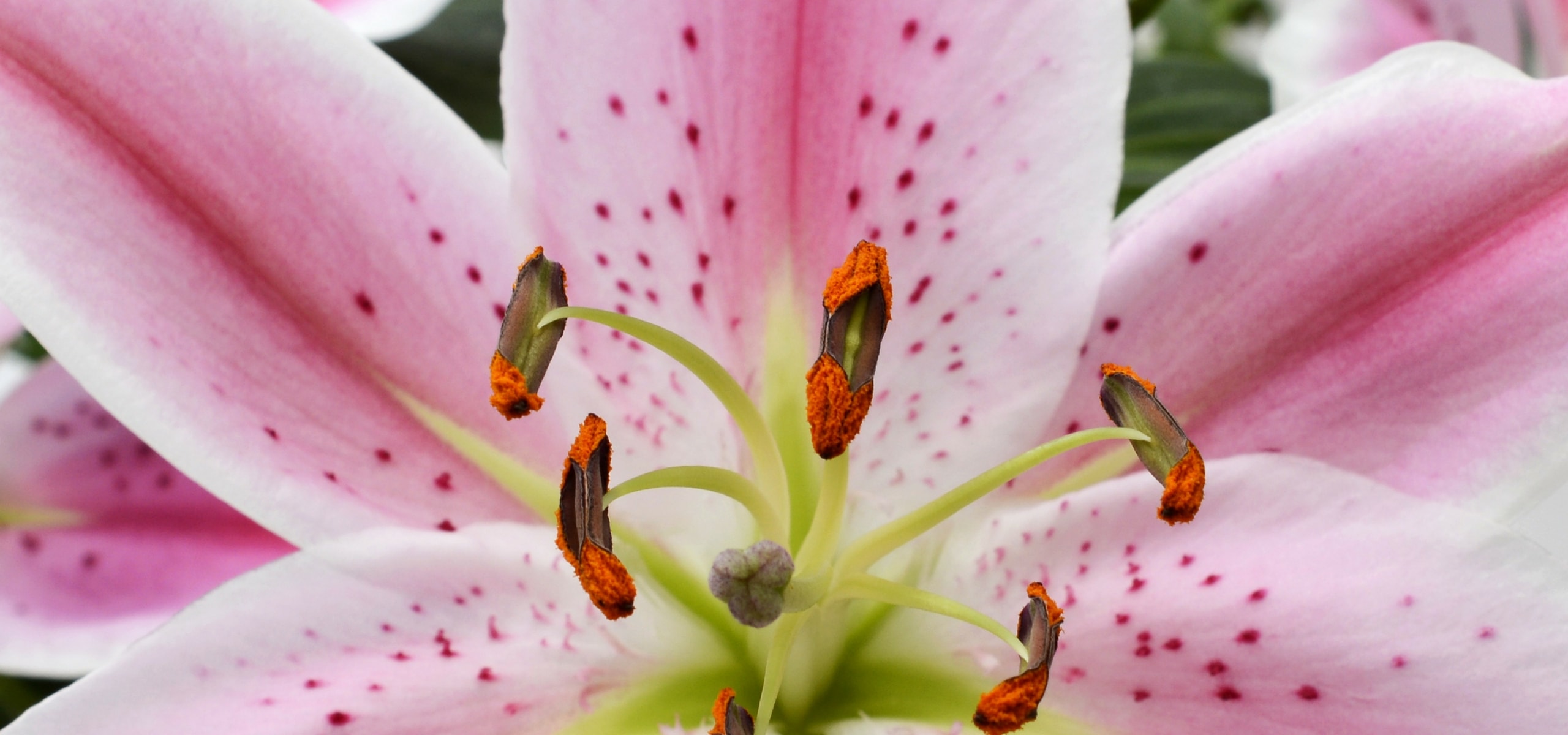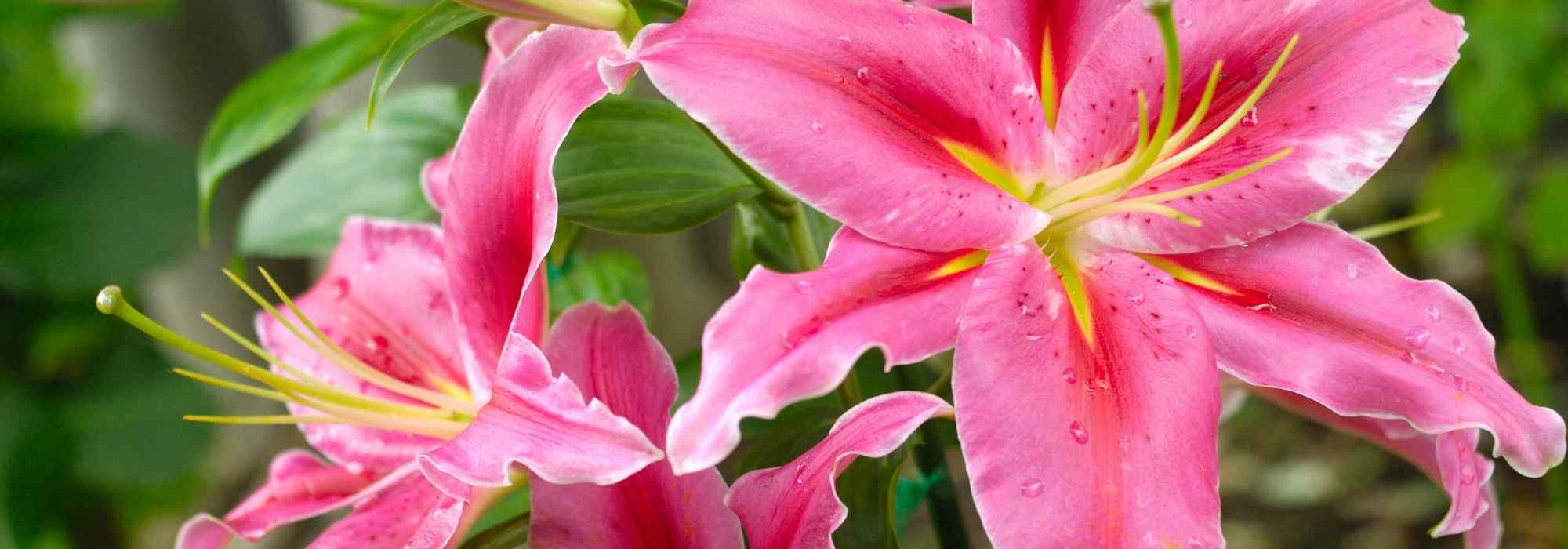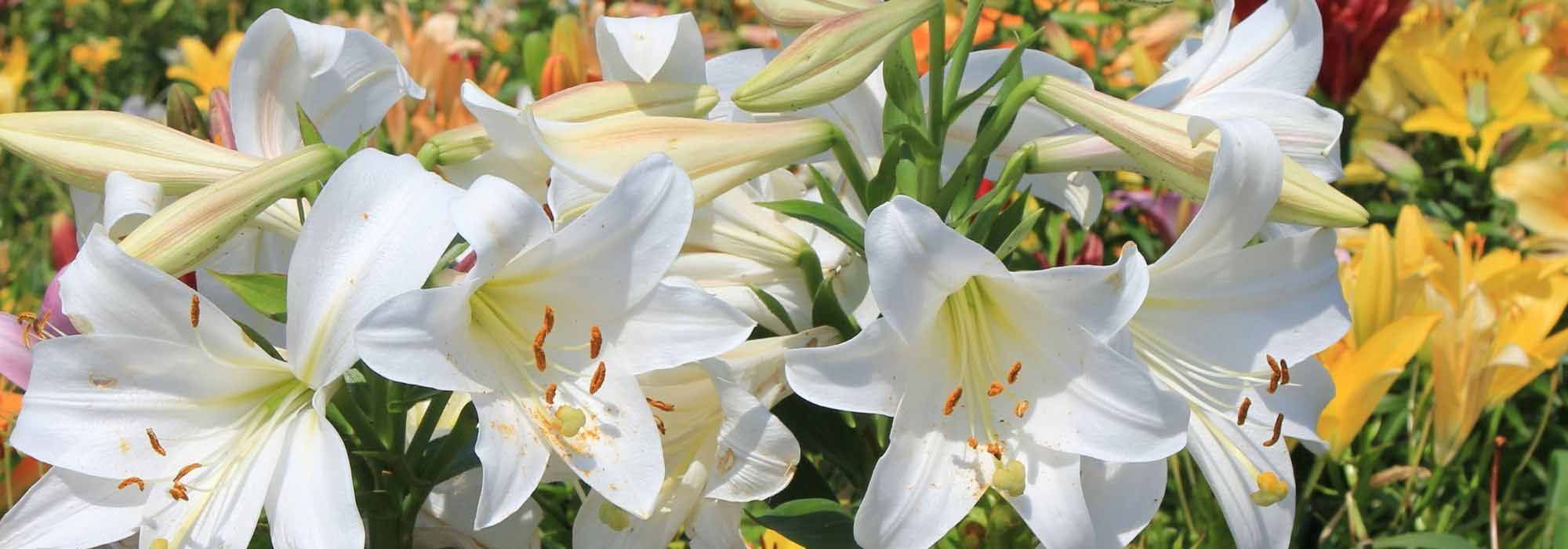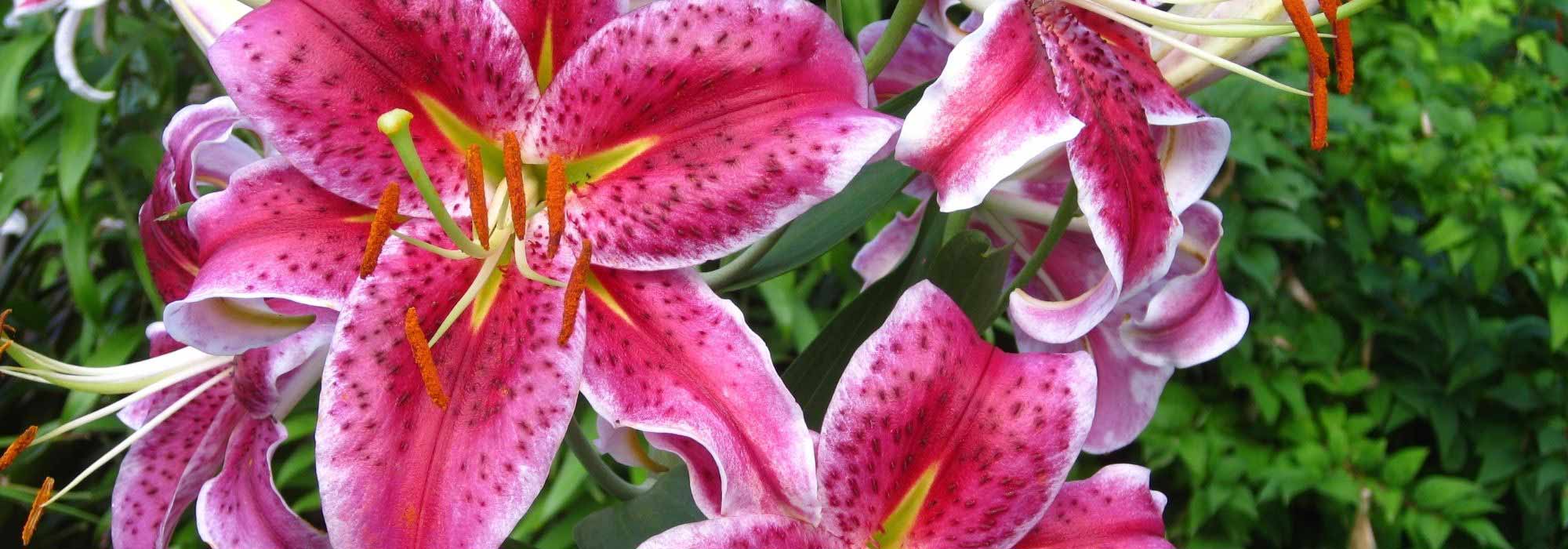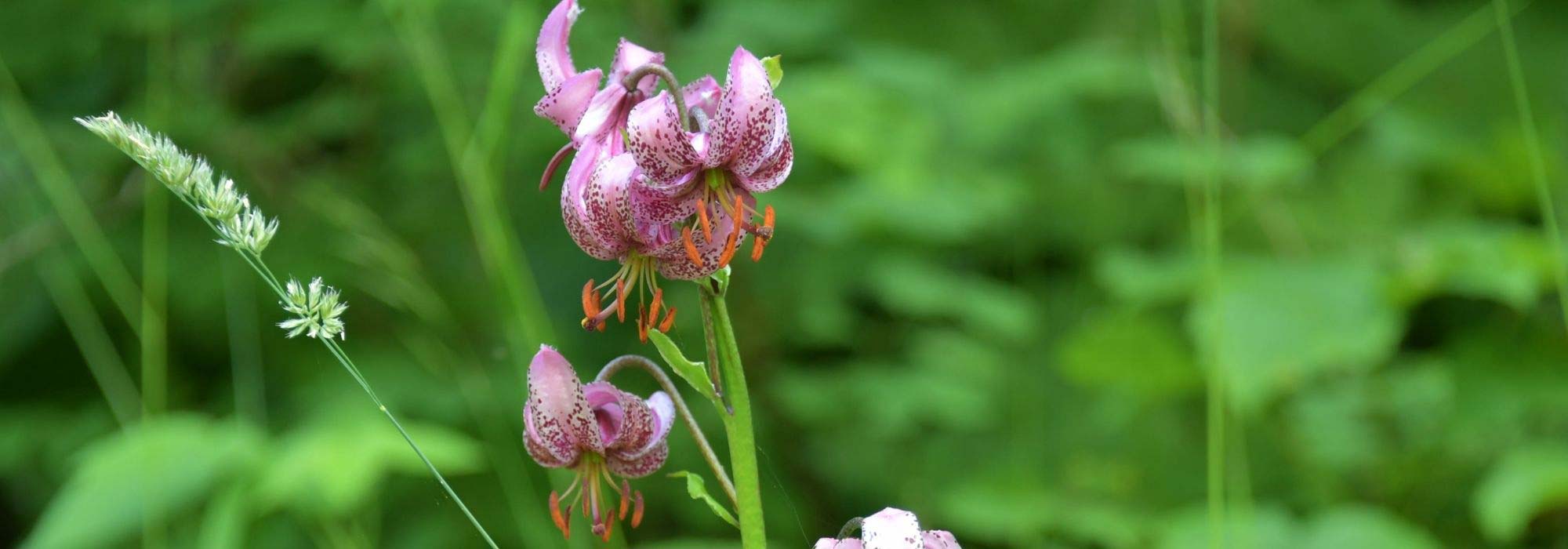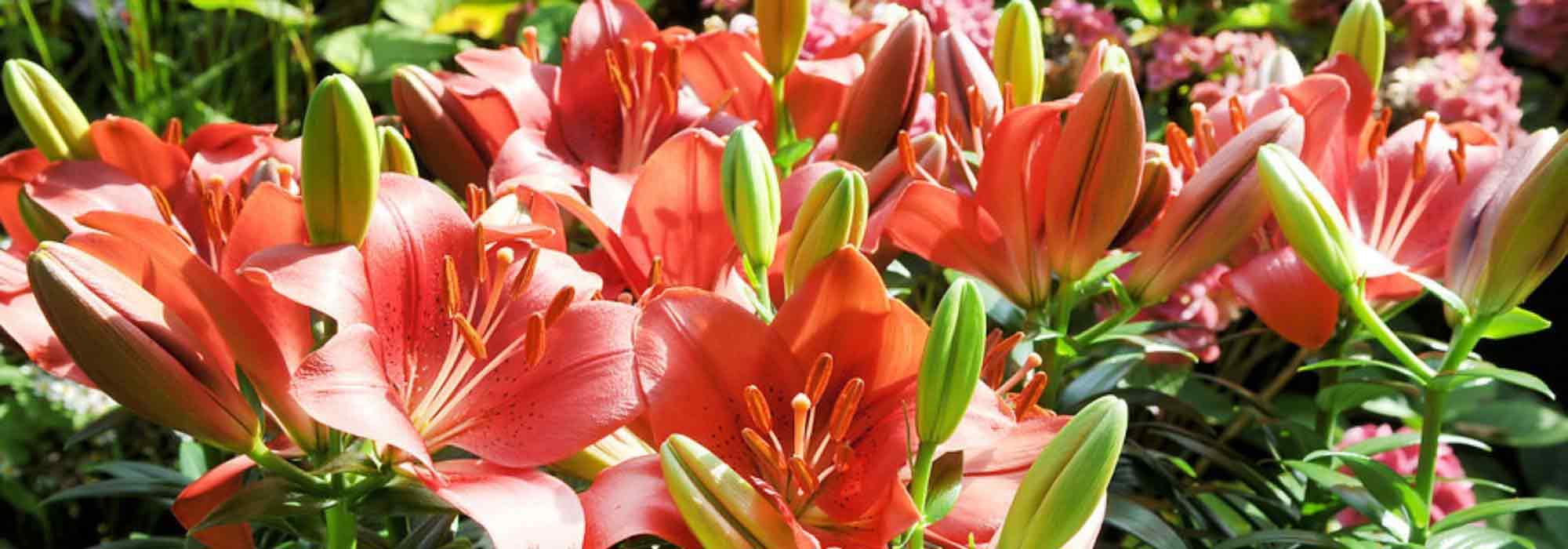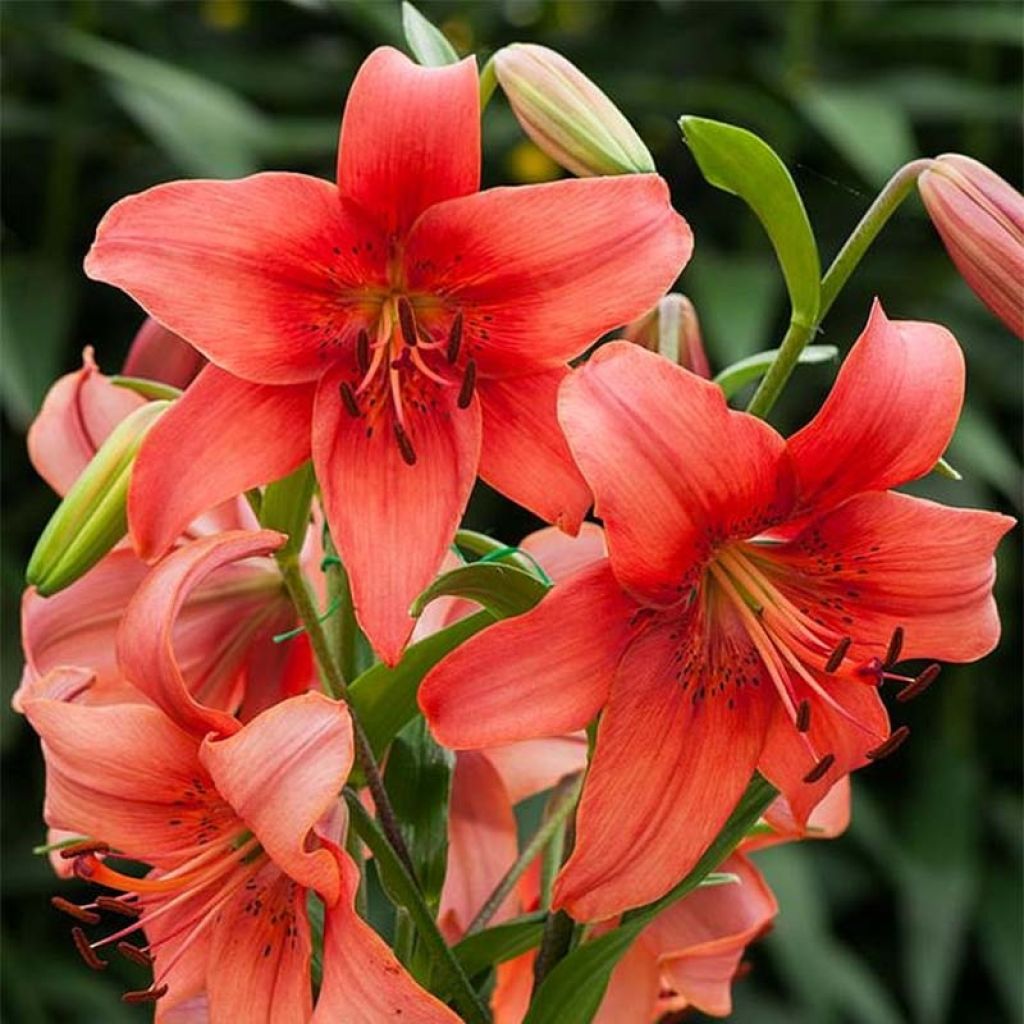

Lis asiatique Pearl Loraine
View more pictures
Hide images
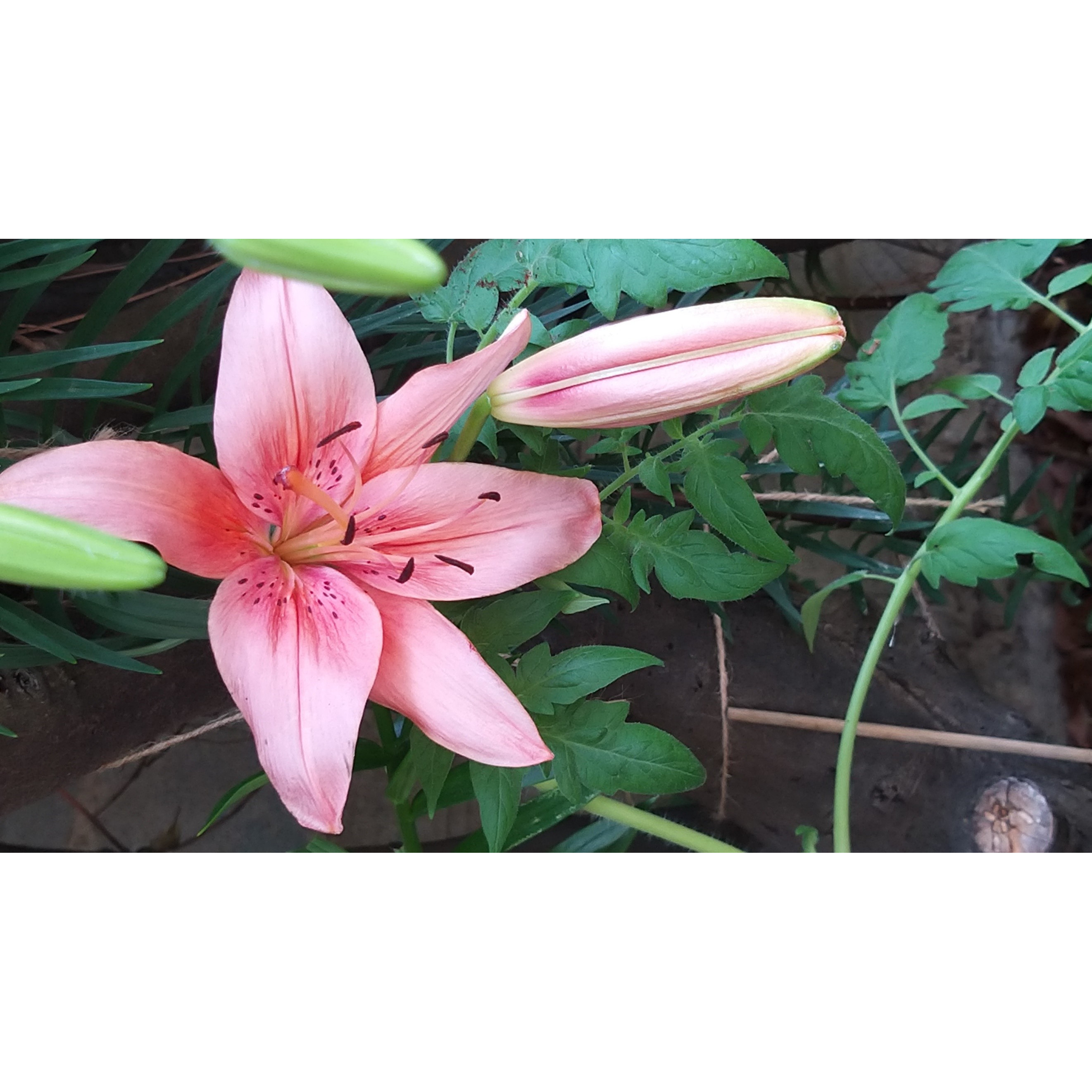
Thierry P.

June flowering - image 5
Thierry P. • 84 FR
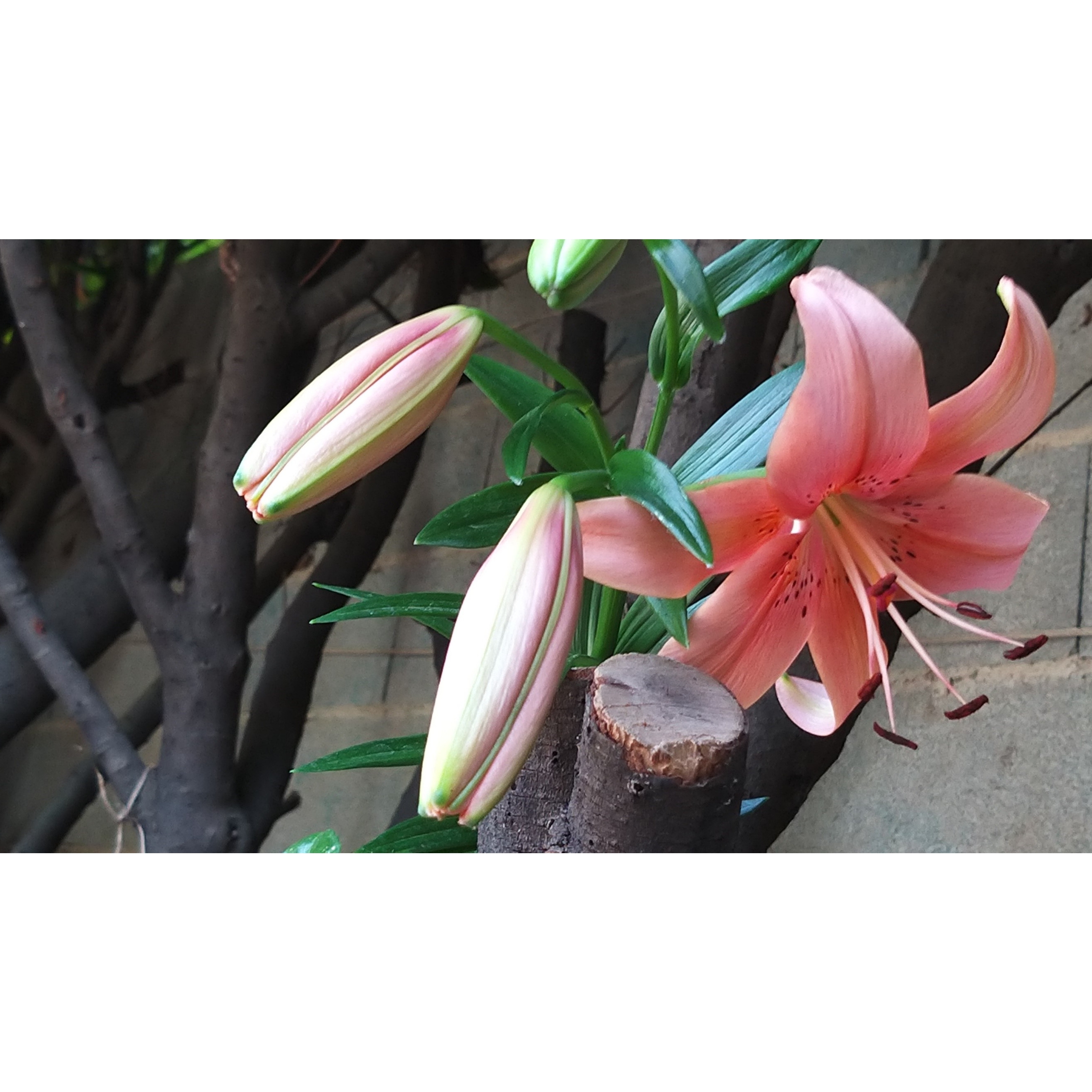
Thierry P.

June flowering - image 6
Thierry P. • 84 FR
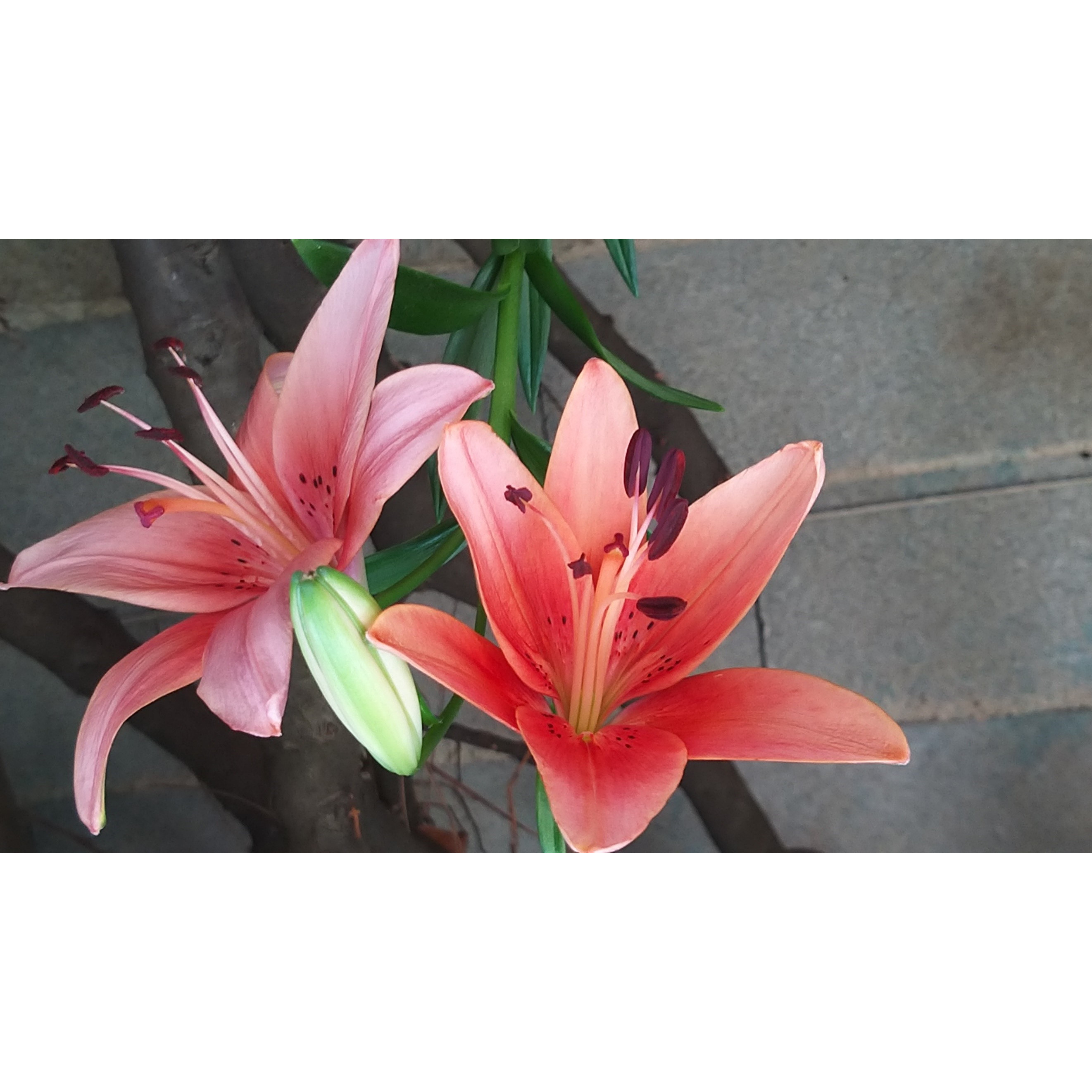
Thierry P.

June flowering - image 4
Thierry P. • 84 FR
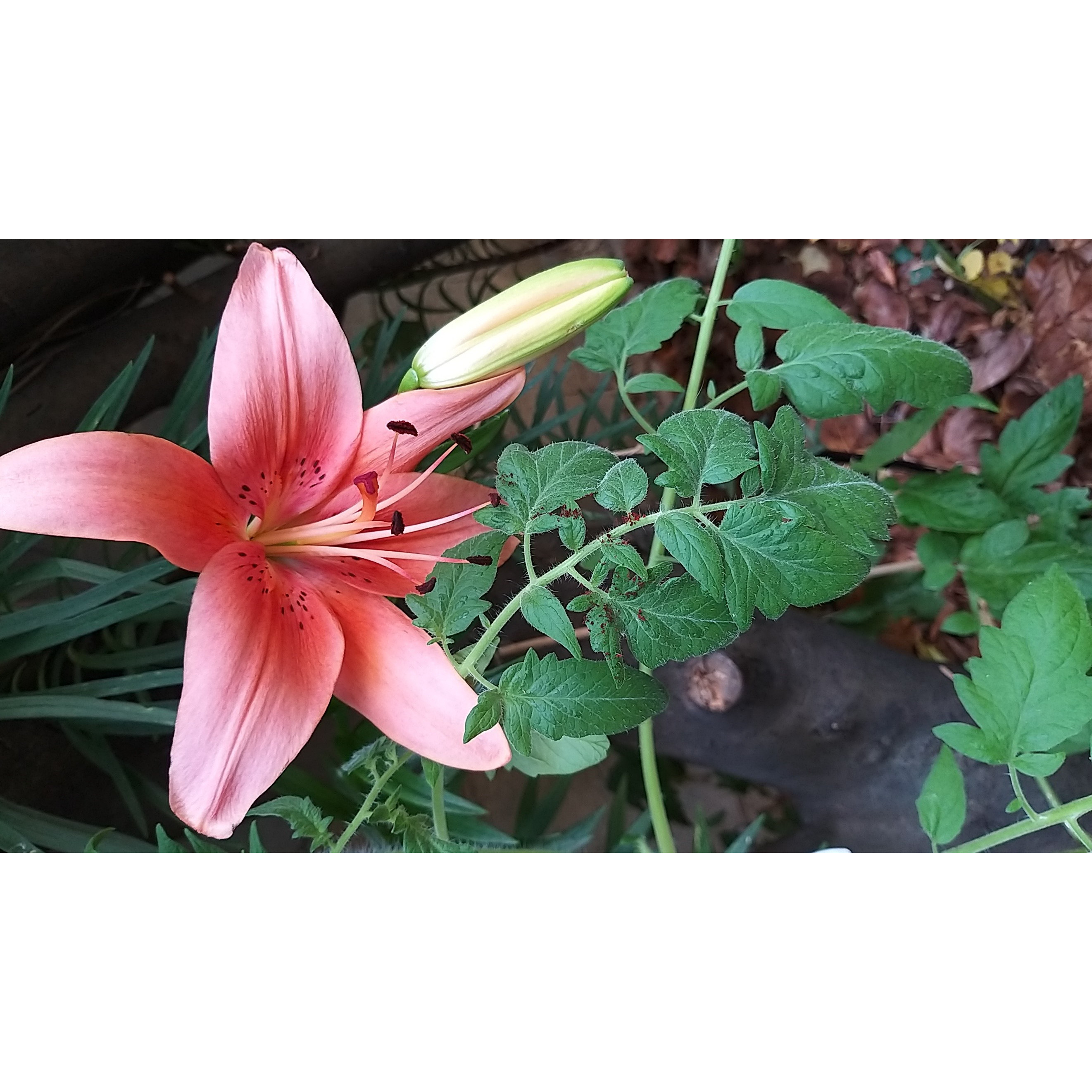
Thierry P.

June flowering - image 2
Thierry P. • 84 FR
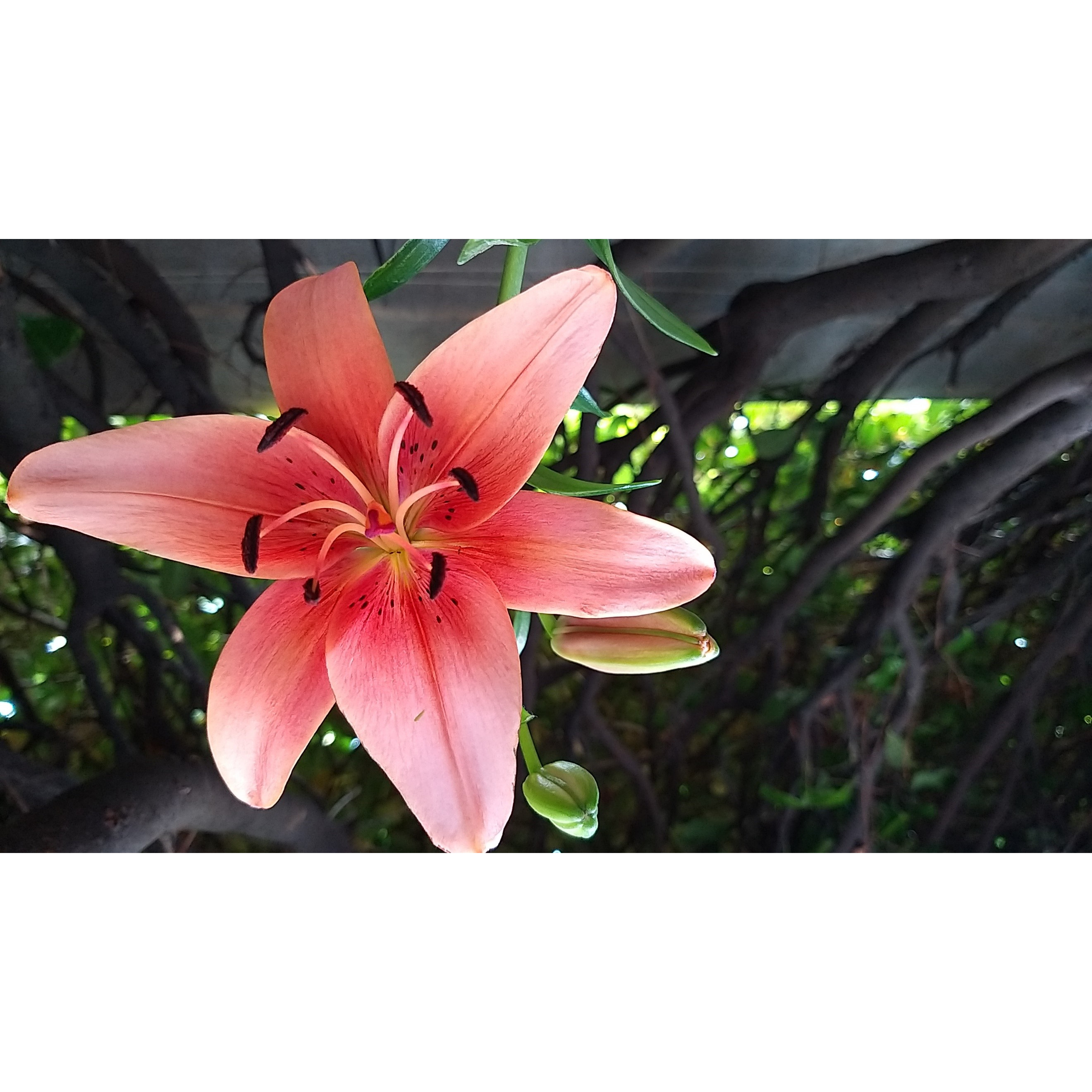
Thierry P.

June flowering - image 3
Thierry P. • 84 FR
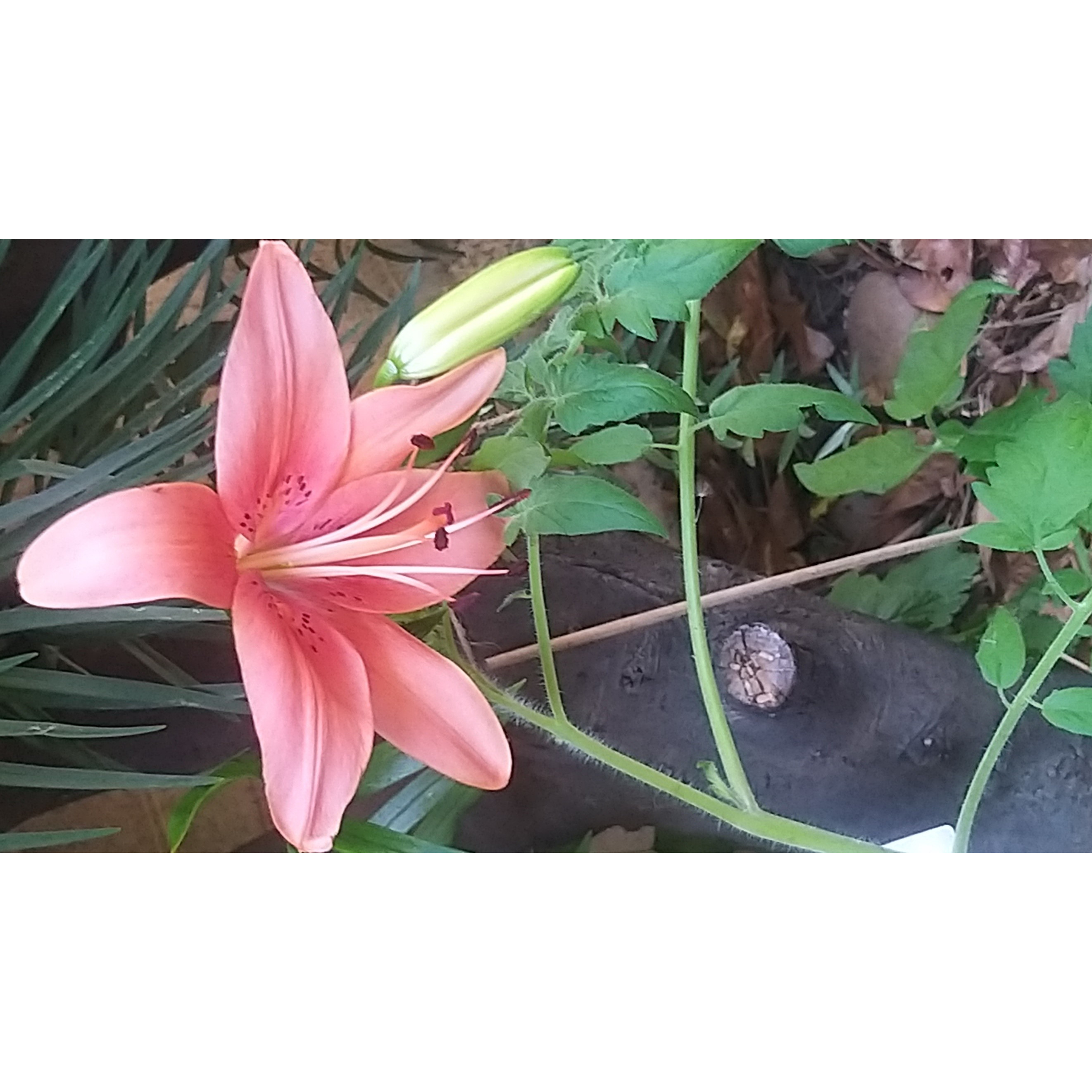
Thierry P.

Flowering in June - picture 1 - Close to a tomato plant.
Thierry P. • 84 FR
Lilium Pearl Loraine - Lily
Lilium x asiatica Pearl Loraine
Asiatic Lily
Special offer!
Receive a €20 voucher for any order over €90 (excluding delivery costs, credit notes, and plastic-free options)!
1- Add your favorite plants to your cart.
2- Once you have reached €90, confirm your order (you can even choose the delivery date!).
3- As soon as your order is shipped, you will receive an email containing your voucher code, valid for 3 months (90 days).
Your voucher is unique and can only be used once, for any order with a minimum value of €20, excluding delivery costs.
Can be combined with other current offers, non-divisible and non-refundable.
Why not try an alternative variety in stock?
View all →This plant carries a 6 months recovery warranty
More information
We guarantee the quality of our plants for a full growing cycle, and will replace at our expense any plant that fails to recover under normal climatic and planting conditions.

Would this plant suit my garden?
Set up your Plantfit profile →
Description
Lilium 'Pearl Loraine' Asiatic Lily belongs to a series of hybrid lilies called 'Pearl', which are vigorous, floriferous, and easy to grow, in a palette of particularly refined colours. The flowers of 'Pearl Loraine' are very large, beautifully directed outward, and salmon-pink, an exquisite colour rarely seen in lilies. They bloom for several weeks in summer, carried by exceptionally strong stems. Once well established, this lily blooms faithfully every year and quickly naturalises in borders, pots, or even large rockeries. Its flowers are beautiful in bouquets.
The genus Lilium belongs to the family Liliaceae, its representatives are bulbous plants generally very resistant to cold in soils that do not retain excessive water in winter. 'Pearl Loraine', introduced in 2008, is a very recent hybrid obtained by cross-breeding various Asian species, including Lilium longiflorum which is vigorous and very accommodating. This bulbous plant spends the winter resting underground. Vegetation starts to appear around April, to produce a leafy stem. It will reach 1 to 1.20 metres (3 to 4 feet) high when in flower, and the clump will spread without theoretical limit over time, as the bulbs produce bulblets through vegetative multiplication. Its spectacular flowers appear from mid-June to mid-July, for about 4 weeks. On the leafy stems, numerous flowers with 6 recurved petals appear, up to 15 cm (6in) in diameter on a mature plant. Their colour is a soft watermelon red, darker towards the discreetly speckled black heart of the flower. Filaments of the same dark salmon red are covered with dark brown pollen, completing the harmony of colours. The stems are covered with alternate, dark green, narrow and shiny leaves.
This wonderful lily thrives in light, fertile, well-balanced and well-prepared soil where it will flourish year after year. You can plant it with perennial plants as it likes having its base shaded. 'Pearl Loraine' will blend in a small romantic bed with other orange, pink or white lilies, campanulas, daylilies in the same shades, foxgloves, or a Cloud Cabbage (Crambe cordifolia), for example. Creeping Phlox, rock cress, or silverweed will cover its base with an elegant carpet. This tall and beautiful lily is superb in tall borders or with shrubs. It is also an excellent cut flower.
Lilium Pearl Loraine - Lily in pictures
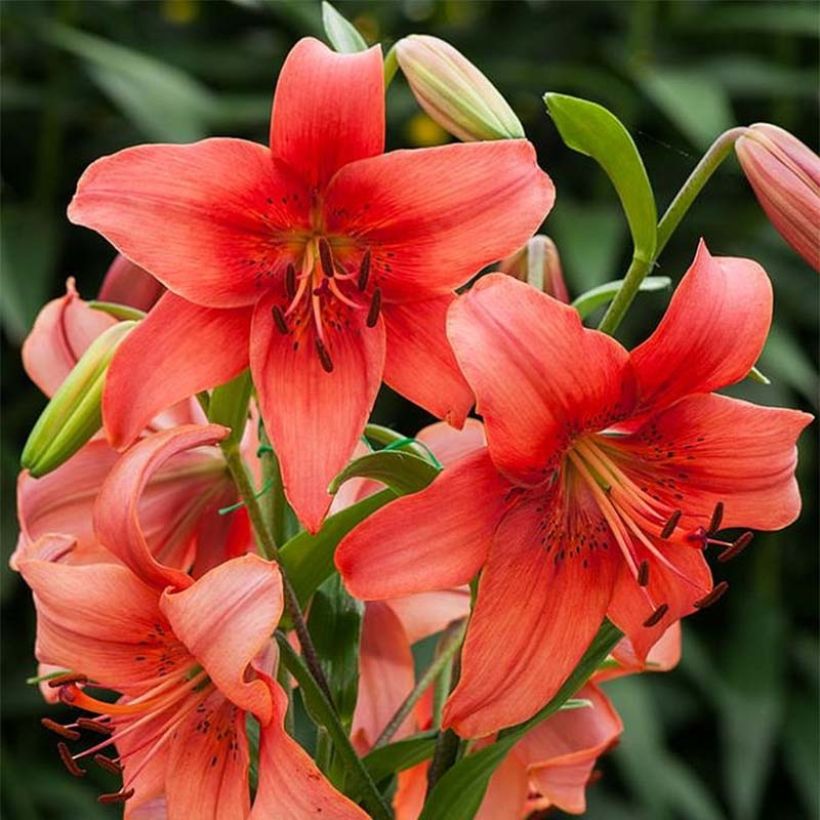

Plant habit
Flowering
Foliage
Botanical data
Lilium
x asiatica
Pearl Loraine
Liliaceae
Asiatic Lily
Cultivar or hybrid
Other Lilies A to Z
View all →Planting and care
The 'Pearl Loraine' lily is not fussy about soil, as long as it is properly drained and not excessively chalky or acidic. It likes rich and light soils. Plant the bulbs in full sun, with the roots in the shade, preferably in spring, 15 cm (6in) deep in a pocket of soil mixed with leaf compost. Surround them with a layer of sand that will protect them from rot and slug attacks, while allowing them to grow more easily. Mark the planting location, as growth only starts in April. If red lily beetles appear, treat them immediately, as their larvae can devour all the leaves. The most effective method is to catch them manually but be careful as they drop as soon as they are touched.
After flowering, it is a good idea to cut the faded flowers halfway down so that the bed remains beautiful during the summer.
Tips for planting lilies in compact soil: The scaly bulbs of lilies hate clay soils that suffocate them and cause rot. In Eastern Europe, the following technique is used to help these bulbs survive the winter. Plant them on 'terraces' built above ground level. These terraces are made up of a first layer of gravel, on which tightly packed branches are placed. Then cover it all with a thick layer of compost 20 to 30 cm (8 to 12in) deep. Plant the bulbs in the compost, on which you can also have some ground cover plants.
On the terrace, you can create sumptuous pots with lilies. Choose a container that is large and deep enough (at least 16 cm (6in) in diameter for 1 bulb). Fill it with a mixture of garden soil, leaf compost, and sand. Plant the lilies in groups of 3 to 5 bulbs, 10-15 cm (4-6in) apart, then water thoroughly. Place the pots in a cool room, or outside once the frost has passed. The ambient temperature should be around 12°C (53.6°F). When shoots appear, move the pot to a conservatory or a very bright room, at a temperature of around 18°C (64.4°F). Apply liquid fertiliser twice a month until the appearance of flower buds.
Planting period
Intended location
Care
Planting & care advice
This item has not been reviewed yet - be the first to leave a review about it.
Haven't found what you were looking for?
Hardiness is the lowest winter temperature a plant can endure without suffering serious damage or even dying. However, hardiness is affected by location (a sheltered area, such as a patio), protection (winter cover) and soil type (hardiness is improved by well-drained soil).

Photo Sharing Terms & Conditions
In order to encourage gardeners to interact and share their experiences, Promesse de fleurs offers various media enabling content to be uploaded onto its Site - in particular via the ‘Photo sharing’ module.
The User agrees to refrain from:
- Posting any content that is illegal, prejudicial, insulting, racist, inciteful to hatred, revisionist, contrary to public decency, that infringes on privacy or on the privacy rights of third parties, in particular the publicity rights of persons and goods, intellectual property rights, or the right to privacy.
- Submitting content on behalf of a third party;
- Impersonate the identity of a third party and/or publish any personal information about a third party;
In general, the User undertakes to refrain from any unethical behaviour.
All Content (in particular text, comments, files, images, photos, videos, creative works, etc.), which may be subject to property or intellectual property rights, image or other private rights, shall remain the property of the User, subject to the limited rights granted by the terms of the licence granted by Promesse de fleurs as stated below. Users are at liberty to publish or not to publish such Content on the Site, notably via the ‘Photo Sharing’ facility, and accept that this Content shall be made public and freely accessible, notably on the Internet.
Users further acknowledge, undertake to have ,and guarantee that they hold all necessary rights and permissions to publish such material on the Site, in particular with regard to the legislation in force pertaining to any privacy, property, intellectual property, image, or contractual rights, or rights of any other nature. By publishing such Content on the Site, Users acknowledge accepting full liability as publishers of the Content within the meaning of the law, and grant Promesse de fleurs, free of charge, an inclusive, worldwide licence for the said Content for the entire duration of its publication, including all reproduction, representation, up/downloading, displaying, performing, transmission, and storage rights.
Users also grant permission for their name to be linked to the Content and accept that this link may not always be made available.
By engaging in posting material, Users consent to their Content becoming automatically accessible on the Internet, in particular on other sites and/or blogs and/or web pages of the Promesse de fleurs site, including in particular social pages and the Promesse de fleurs catalogue.
Users may secure the removal of entrusted content free of charge by issuing a simple request via our contact form.
The flowering period indicated on our website applies to countries and regions located in USDA zone 8 (France, the United Kingdom, Ireland, the Netherlands, etc.)
It will vary according to where you live:
- In zones 9 to 10 (Italy, Spain, Greece, etc.), flowering will occur about 2 to 4 weeks earlier.
- In zones 6 to 7 (Germany, Poland, Slovenia, and lower mountainous regions), flowering will be delayed by 2 to 3 weeks.
- In zone 5 (Central Europe, Scandinavia), blooming will be delayed by 3 to 5 weeks.
In temperate climates, pruning of spring-flowering shrubs (forsythia, spireas, etc.) should be done just after flowering.
Pruning of summer-flowering shrubs (Indian Lilac, Perovskia, etc.) can be done in winter or spring.
In cold regions as well as with frost-sensitive plants, avoid pruning too early when severe frosts may still occur.
The planting period indicated on our website applies to countries and regions located in USDA zone 8 (France, United Kingdom, Ireland, Netherlands).
It will vary according to where you live:
- In Mediterranean zones (Marseille, Madrid, Milan, etc.), autumn and winter are the best planting periods.
- In continental zones (Strasbourg, Munich, Vienna, etc.), delay planting by 2 to 3 weeks in spring and bring it forward by 2 to 4 weeks in autumn.
- In mountainous regions (the Alps, Pyrenees, Carpathians, etc.), it is best to plant in late spring (May-June) or late summer (August-September).
The harvesting period indicated on our website applies to countries and regions in USDA zone 8 (France, England, Ireland, the Netherlands).
In colder areas (Scandinavia, Poland, Austria...) fruit and vegetable harvests are likely to be delayed by 3-4 weeks.
In warmer areas (Italy, Spain, Greece, etc.), harvesting will probably take place earlier, depending on weather conditions.
The sowing periods indicated on our website apply to countries and regions within USDA Zone 8 (France, UK, Ireland, Netherlands).
In colder areas (Scandinavia, Poland, Austria...), delay any outdoor sowing by 3-4 weeks, or sow under glass.
In warmer climes (Italy, Spain, Greece, etc.), bring outdoor sowing forward by a few weeks.






























